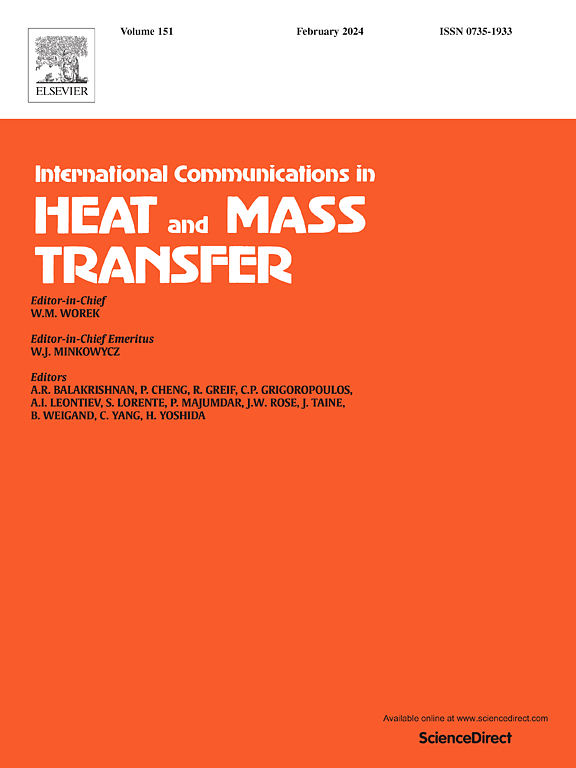Numerical investigation on vacuum spray flash evaporation of ethanol-water solution
IF 6.4
2区 工程技术
Q1 MECHANICS
International Communications in Heat and Mass Transfer
Pub Date : 2025-02-20
DOI:10.1016/j.icheatmasstransfer.2025.108719
引用次数: 0
Abstract
To investigate the flash evaporation of aqueous ethanol in vacuum environment, a correction factor is introduced to modify the flash evaporation rate equation. The modified method is based on the Lagrangian-Eulerian model that couples the momentum and mass transfer of continuous and discrete phases. The results for droplets temperature exhibit average errors of less than 3.28 K compared to experimental data, thereby verifying accuracy of the method. Through the analysis of the flash evaporation behavior of two-component droplets, two distinct stages can be identified. “The first stage of flashing” is characterized by high flash evaporation rate, rapid temperature decline, and short duration, while “the second stage of flashing” is opposite to the Stage I. As the droplet size increases and the initial ethanol concentration decreases, it is observed that the duration of Stage I increases. This phenomenon extends the duration of high flash evaporation rate, thereby enhancing the mass transfer to the vapor, leads to larger decline of ethanol mass fraction. Increasing the spray temperature or decreasing the vacuum pressure can also enhance the mass transfer and flash evaporation rate. However, spray temperature shows a more significant effect on the flash evaporation rate and evaporated mass than that of vacuum pressure.
求助全文
约1分钟内获得全文
求助全文
来源期刊
CiteScore
11.00
自引率
10.00%
发文量
648
审稿时长
32 days
期刊介绍:
International Communications in Heat and Mass Transfer serves as a world forum for the rapid dissemination of new ideas, new measurement techniques, preliminary findings of ongoing investigations, discussions, and criticisms in the field of heat and mass transfer. Two types of manuscript will be considered for publication: communications (short reports of new work or discussions of work which has already been published) and summaries (abstracts of reports, theses or manuscripts which are too long for publication in full). Together with its companion publication, International Journal of Heat and Mass Transfer, with which it shares the same Board of Editors, this journal is read by research workers and engineers throughout the world.

 求助内容:
求助内容: 应助结果提醒方式:
应助结果提醒方式:


